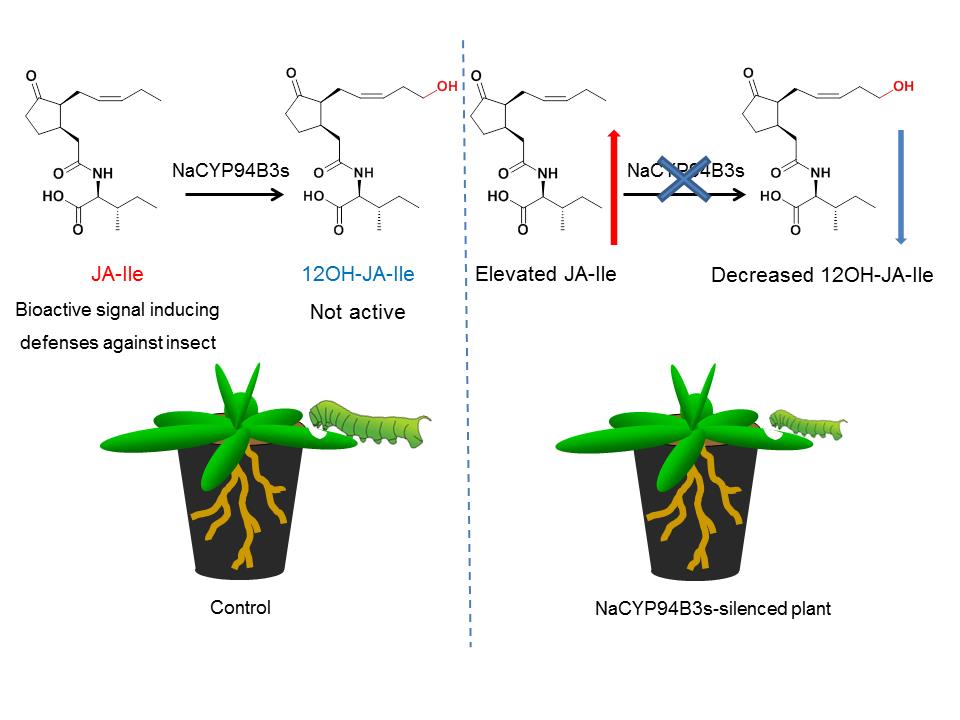During a long-term co-evolutionary process, plants have evolved sophisticated and effective mechanisms to defend themselves against herbivore attack. However, crop domestication with its major focus on architecture, growth and yield in large monocultures has made crop plants vulnerable to insect herbivores, causing enormous economic and yield losses every year.
Although pesticides are relatively effective to control pests, their detrimental effect on environment and human health has become a major concern. Using genetic engineering to generate insect herbivore-resistant crop plants is becoming increasingly important, as genetically modified crops require limited pesticide application and thus can be used in environment friendly and economical agricultural practice.
Prof. WU Jianqiang’ team at the Kunming Institute of Botany, Chinese Academy of Sciences (CAS) investigated how a wild tobacco plant copes with insect herbivory. This work is helpful to understand plant defense mechanisms and to generate inducible resistance to herbivores in crops.
The phytohormone jasmonoyl-L-isoleucine (JA-Ile) is well known as the key signaling molecule that elicits plant defense responses after insect herbivory. Oxidation, which is catalyzed by the cytochrome P450s of the CYP94 family, is thought to be one of the main catabolic pathways of JA-Ile.
This study silenced the transcripts of two JA-Ile hydroxylase genes by virus-induced gene silencing (VIGS) in the wild tobacco, Nicotiana attenuata. The VIGS plants had doubled herbivory-induced JA-Ile levels and greatly enhanced plant resistance to the generalist insect herbivore, Spodoptera litura. The poor larval performance was strongly correlated with the high concentrations of several JA-Ile-dependent direct defense metabolites in the VIGS plants. Given that silencing these CYP94 genes did not detectably alter plant growth and highly increased plant defense levels, it was proposed that CYP94B3 genes can be potential targets for genetic improvement of herbivore-resistant crops.
The study has recently been published online in Journal of Agricultural and Food Chemistry. http://pubsdc3.acs.org/doi/full/10.1021/acs.jafc.5b06056
This work was supported by the National Natural Science Foundation of China (NSFC, 31201527, 31470369), the Strategic Priority Research Program of the Chinese Academy of Sciences (No. XDB11050200).

Contact:
Department of Economic Plants and Biotechnology
Yunnan Key Laboratory for Wild Plant Resources
Kunming Institute of Botany, Chinese Academy of Sciences
Prof. Dr. WU Jianqiang




